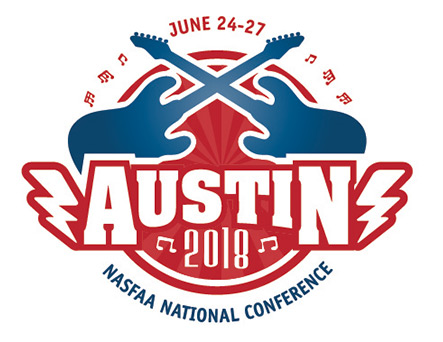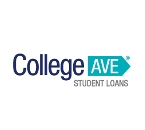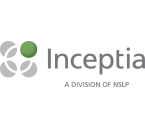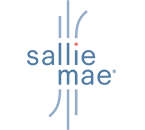NASFAA's Public Policy Open Forum, 3:15 - 4:15 p.m.
By Megan Walter, Policy & Federal Relations Staff
NASFAA members had the opportunity to pick the brains of the organization’s policy leaders during an open forum session on Monday, during which NASFAA leaders discussed issues ranging from verification and FAFSA simplification to risk-sharing and innovative learning models.
NASFAA President Justin Draeger, Vice President of Policy and Federal Relations Megan Coval, and Director of Policy Analysis Karen McCarthy led the session. Here are a few highlights (questions and answers edited for length and clarity).
Questions
Q: What are the chances of having the drug question ("Have you been convicted for the possession or sale of illegal drugs for an offense that occurred while you were receiving federal student aid (grants, work-study, and/or loans)"?) removed from the FAFSA as it tends to target a particular population of students?
A: The removal of the drug conviction question has been included in introduced legislation and is a NASFAA recommendation included in our FAFSA simplification proposal.
Q: Given the current political climate, has NASFAA given any thought to a “worst case scenario” for higher education and how we as financial aid professionals can work to prevent, for example, the elimination of federal loans for graduate students?
A: There are two pieces to this; on one hand strategy wise, when you hear fringe arguments against things we stand for as a profession—like, basic access, commitment to funding, etc.—you can make the decision to ignore it because it's fringe and we don't want to give credence to it and end up elevating it. The second way is that you define hard boundaries, and every time these boundaries are crossed or approached, you make a commitment to fight back. We here at NASFAA try to keep tabs on the political wind in D.C., who the member is who said something. Our policy team is very agile and have made lots of visits to Capitol Hill to talk to congressional staff from both parties, and we’re confident that we've built up a strong reputation that gives us some force to push back with.
Q: Many institutions have seen an increase in creative scheduling and creative programs which are generally outside of standard term structures. The variety of programs are growing and regulations are not changing to keep up. Is there any talk at ED or on the Hill about the issues with programs trying to do creative things and how that affects the way we need to offer financial aid?
A: There have been announcements about ED looking at innovative learning modules for negotiated rulemaking, which would address some of these issues. The first step will be to publicly announce the intent to negotiate which would be public hearings, in person with ED, where any member can show up and testify or submit written comments if they’re unable to attend. NASFAA does both and we will solicit comments from our members before submitting any comments to ED. This will be an important part as we will now need to hear about the specifics related to awarding financial aid that need to be addressed.
Q: When it comes to risk-sharing and accountability I believe what Congress fails to understand is that many of us (institutions) are already spending significant resources to mitigate risk, i.e. covering return of Title IV balances, hiring third parties to help with loan counseling, spending institutional scholarship funds to help at-risk students. What kind of work can we do as an association to collect information on what institutions are doing currently to show how we all already have "skin in the game"?
A: We can do more to try to quantify this kind of information, not just financial aid offices alone, but practices across the board of higher education. Circumstances have changed and in terms of volume, the sheer number of students that are defaulting annually has increased. As these numbers have become staggering over the past 10 to 20 years, to some extent the institutional accountability conversation has already left the station. While we shouldn't stop highlighting the way schools have skin-in-the-game, we have to shape the conversation with policymakers in a way that doesn't end up with a regressive policy, where open-access school could take a major hit.
Q: Regarding verification is there anything we can do proactively as ED continues to lose resources? My concern is related to the 2018-19 verification issue, and the chances that something like this happens again. What can we do to avoid that in future? Should we be expecting 400/401 codes every year now?
A: About the 400/401 codes, the reason we have them is because of the masking solution in the IRS Data Retrieval Tool. As long as we have that in place, they are going to continue and will need to be resolved. We’ve expressed our frustrations to ED about the fact that it doesn't show you exactly what the issue is by using individual codes versus just student/parent differentiations.
A: This brings up an important point about why letting NASFAA know when you see something unexpected happening is so necessary. Without your emails and calls, we wouldn't have known there was a problem with selection rates.
A: Going back to 2009-10 negotiated rulemaking, we came to consensus on verification regulation. We gave up five elements and the 30 percent verification cap, but verification hasn’t gotten easier, something isn't working correctly. Prior-Prior Year (PPY) should have created lower verification numbers as well, and it doesn’t seem to be doing what we expected. The ultimate solution to these verification issues might end up being FAFSA reform by reducing application elements that still allow us to have verifiable data that gives us a good idea of who should be receiving what aid.
Q: One of the more complicated things we deal with is trying to calculate aid eligibility for programs in modules, is this something we may see movement on to help us administer aid?
A: There are things we can do to make module calculations easier, for example, the PROSPER Act takes the current day-by-day calculations and divides the term into quartiles instead. While this makes the calculations easier, from a NASFAA prospective, we’re not sure this is a “one size fits all” kind of fix. We hear from schools on their module and microprograms and their innovative programs but we’re not hearing a standardization of these programs are being created since schools are exploring innovate learning programs in many different and unique ways. This, in turn, makes it difficult for our team to craft NASFAA proposals for the Hill.
Publication Date: 6/25/2018












